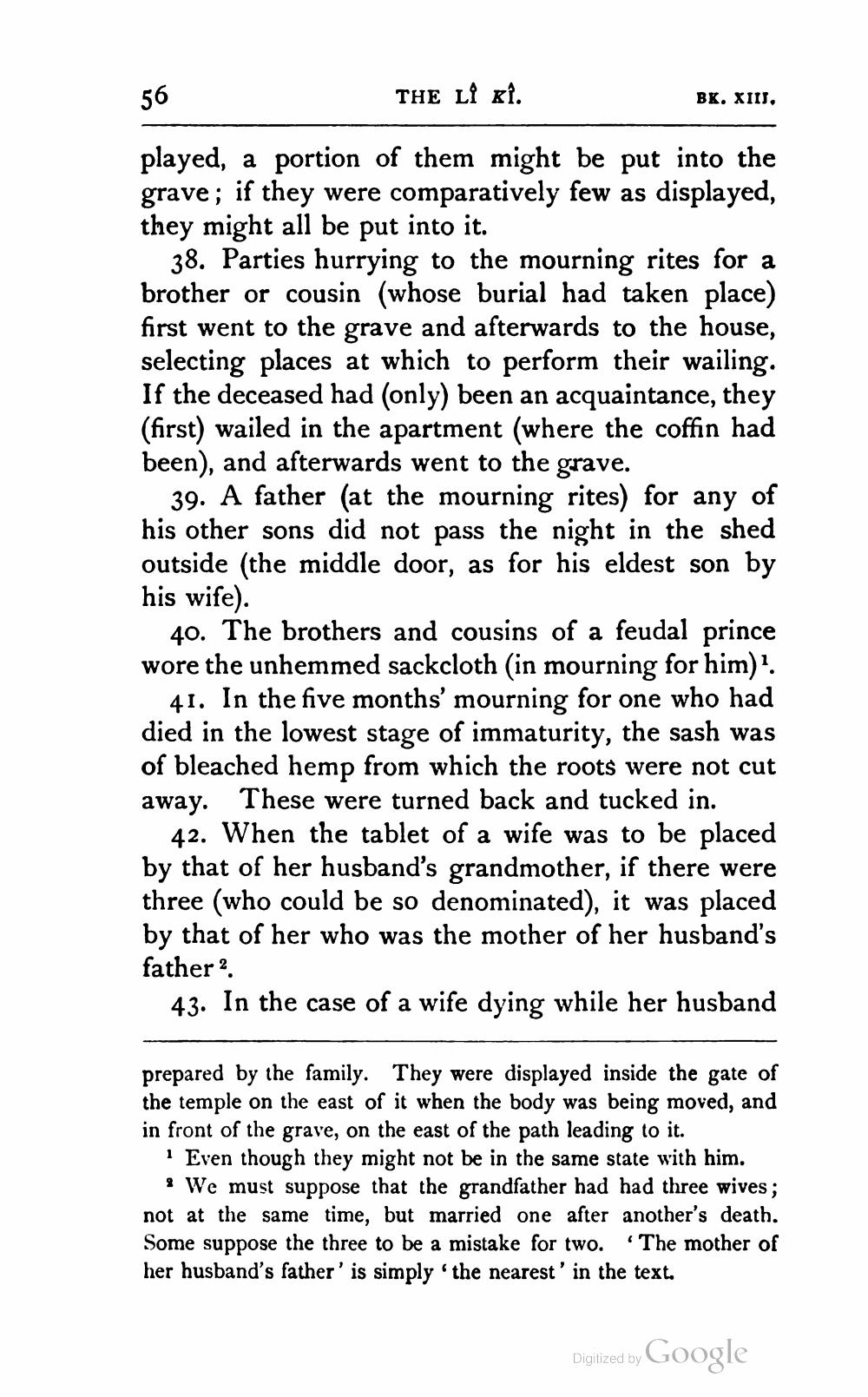________________
56
THE LÎ ki.
BK. XIII,
played, a portion of them might be put into the grave; if they were comparatively few as displayed, they might all be put into it.
38. Parties hurrying to the mourning rites for a brother or cousin (whose burial had taken place) first went to the grave and afterwards to the house, selecting places at which to perform their wailing. If the deceased had (only) been an acquaintance, they (first) wailed in the apartment (where the coffin had been), and afterwards went to the grave.
39. A father (at the mourning rites) for any of his other sons did not pass the night in the shed outside (the middle door, as for his eldest son by his wife).
40. The brothers and cousins of a feudal prince wore the unhemmed sackcloth (in mourning for him)?
41. In the five months' mourning for one who had died in the lowest stage of immaturity, the sash was of bleached hemp from which the roots were not cut away. These were turned back and tucked in.
42. When the tablet of a wife was to be placed by that of her husband's grandmother, if there were three (who could be so denominated), it was placed by that of her who was the mother of her husband's father?
43. In the case of a wife dying while her husband
prepared by the family. They were displayed inside the gate of the temple on the east of it when the body was being moved, and in front of the grave, on the east of the path leading to it.
Even though they might not be in the same state with him. : We must suppose that the grandfather had had three wives : not at the same time, but married one after another's death. Some suppose the three to be a mistake for two. "The mother of her husband's father' is simply the nearest' in the text.
Digitized by Google




